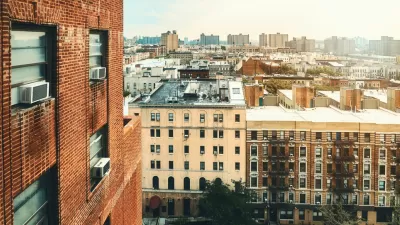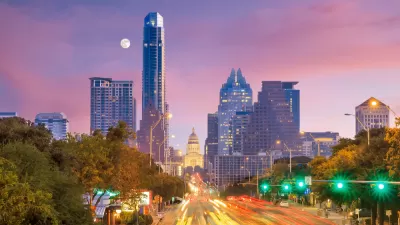The Texas capital, once one of the most affordable metro areas, is experiencing a housing affordability crisis as median prices soar and longtime residents face displacement.

Austin's burgeoning popularity is creating a crisis of affordability in the city's housing market, reports Edgar Sandoval. The Texas capital, which has seen explosive growth that shows no signs of stopping, "is on track to become by year’s end the least affordable major metro region for homebuyers outside of California," according to a Zillow forecast. As Sandoval writes, "With an average of 180 new residents moving to the city every day in 2020, housing inventory is very low, realtors said. Multiple offers, bidding wars and blocks-long lines outside open houses are commonplace."
The current median home price of $536,000 is almost $100,000 more than at the same time last year, and more than twice the median cost in 2011. Meanwhile, renters are feeling similar pressures, with an average apartment going for $1,600, a rise of 38 percent in the last ten years.
Previously one of the more affordable urban centers in the country, Austin now faces a housing crisis that is displacing longtime residents and pushing some into homelessness. The problem is so alarming that, earlier this year, the city hired a 'displacement officer' tasked with "preventing widespread gentrification even as cranes continue to dot the skyline and new structures climb ever higher." The office will receive $300 million over the next 13 years, which many say is not enough to address the growing crisis as more residents find themselves having to relocate to more remote parts of the city.
FULL STORY: How Austin Became One of the Least Affordable Cities in America

Americans May Be Stuck — But Why?
Americans are moving a lot less than they once did, and that is a problem. While Yoni Applebaum, in his highly-publicized article Stuck, gets the reasons badly wrong, it's still important to ask: why are we moving so much less than before?

Using Old Oil and Gas Wells for Green Energy Storage
Penn State researchers have found that repurposing abandoned oil and gas wells for geothermal-assisted compressed-air energy storage can boost efficiency, reduce environmental risks, and support clean energy and job transitions.

Placekeeping: Setting a New Precedent for City Planners
How a preservation-based approach to redevelopment and urban design can prevent displacement and honor legacy communities.

San Francisco’s Muni Ridership Grew in 2024
The system saw its highest ridership since before the Covid-19 pandemic, but faces a severe budget shortage in the coming year.

Colorado Lawmakers Move to Protect BRT Funding
In the face of potential federal funding cuts, CDOT leaders reasserted their commitment to planned bus rapid transit projects.

Safe Streets Funding in Jeopardy
The Trump administration is specifically targeting bike infrastructure and other road safety projects in its funding cuts.
Urban Design for Planners 1: Software Tools
This six-course series explores essential urban design concepts using open source software and equips planners with the tools they need to participate fully in the urban design process.
Planning for Universal Design
Learn the tools for implementing Universal Design in planning regulations.
Heyer Gruel & Associates PA
City of Moreno Valley
Institute for Housing and Urban Development Studies (IHS)
City of Grandview
Harvard GSD Executive Education
Salt Lake City
NYU Wagner Graduate School of Public Service
City of Cambridge, Maryland





























